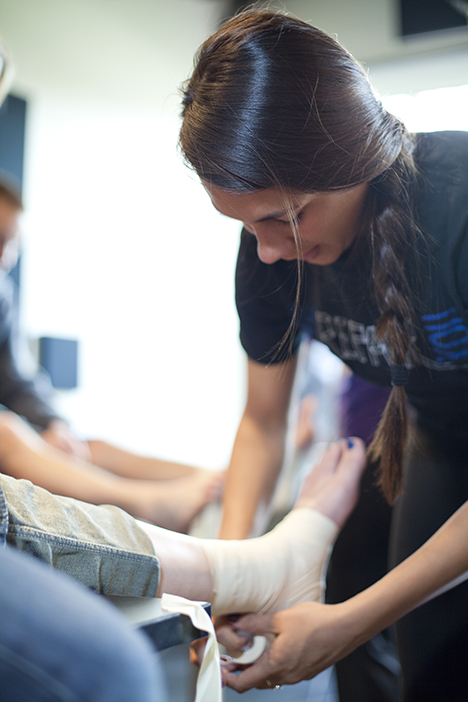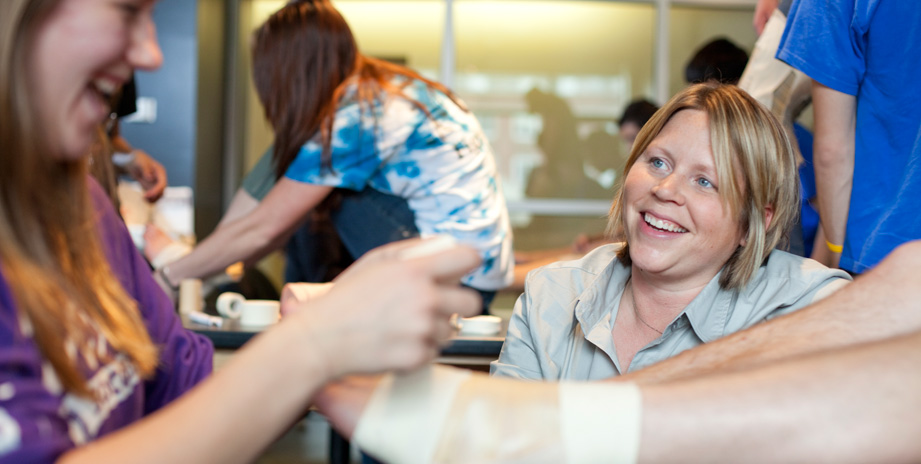
Athletic training is one of many fields that require a level of testing or certification before graduates can begin their careers. Graduates of the Bachelor of Science in Athletic Training program are required to pass the Board of Certification (BOC) exam in order to practice in the athletic training field. And AU students have proven that they are ready to move into the professional world by ranking first in BOC pass rates in the Sate of Illinois for the most recent three-year aggregate 2013-2015.
“We’re not only preparing students for the BOC exam, but to be quality healthcare professionals as athletic trainers,” said program director and associate professor of athletic training Oscar Krieger. “Preparing them to be quality professionals is ultimately what is having an impact on their success with the exams.”
All Commission on Accreditation of Athletic Training Education accredited institutions are measured in two categories: first-attempt pass rate and any-attempt pass rate. AU’s first-attempt BOC pass rate is 92% compared to the national mean of 78%, and AU’s any-attempt BOC pass rate is 100% compared to the national mean of 88%.
“Our pass rates say a lot about our professors. They go above and beyond, and they want us to be successful,” said senior athletic training major Gabrielle Martin. “They share with us the knowledge we need and go out of the way to teach us things like how to handle testing anxiety or other factors that may effect our results.”
“We get a wide variety of clinical settings which helps us know where we want to start in our career,” said senior athletic training major Skyla Strum. “We also get exposure to a lot of people who have different specialties and knowledge on a variety of subjects.”
Throughout the program, students receive more than 1,200 hours of clinical experience and 68 semester hours of professional and core courses in athletic training. The combination of classroom and field experience allows students to enhance their decision-making and critical thinking skills. By the time they are taking the exam, AU students are already thinking like athletic training professionals.
Graduates of the program go on to work in a variety of settings, including high schools, collegiate and professional sport athletic training facilities, corporations and physical therapy clinics. Many graduates also purse advanced degrees in kinesiology, exercise physiology, sport management, physical therapy and other healthcare fields.
For more information about the athletic training program, visitaurora.edu/athletictraining.
